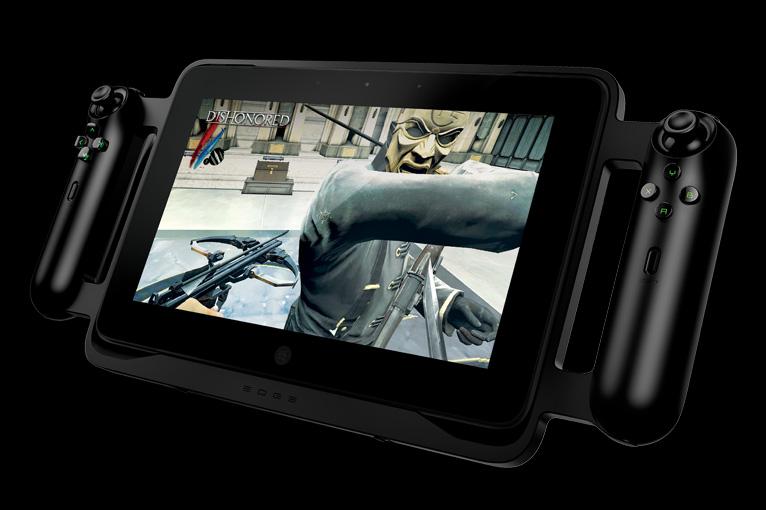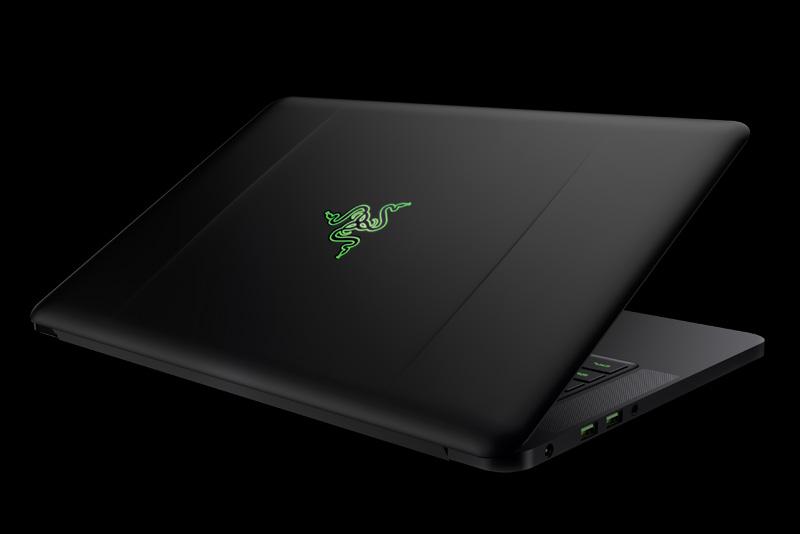
Razer’s outspoken CEO, Min Liang-Tan, isn’t afraid to admit when things may not work. In a business-oriented society, that is a refreshing rarity, and part of what makes Razer so successful as a company – and rare. This was very much evident at CES 2014 in Las Vegas, where Razer debuted two new products: the Nabu fitness band, and Project Christine, a unique modular PC.
”The craziest thing is we probably see more pushback on Christine than Nabu.”
And then there is Project Christine, a prototype modular PC that would allow even novices to swap and upgrade parts with little or no technical knowledge. The concept could conceivably change the PC gaming market forever – assuming it comes to market. Razer has a history of debuting devices at shows like CES, then completely overhauling them before an almost completely different product hits the market, born from that original concept.
We spoke with Tan about the Nabu, Project Christine, and about the odd place Razer finds itself in.
So what do you think of this CES and the reaction you’ve received compared to previous shows?
For us, it’s been a little different. Specifically we tend to be really out of the [norm], because we take a lot of big bets for design and technology and stuff like that. If it was only [Project] Christine, I think it would have been a lot more straightforward for us, but Nabu is one of those projects that we’ve been working on for three-and-a-half years, so we knew we were ready to launch it this year.

Everyone is talking about wearables [at CES]. It was a big change for us. We were kind of expecting people to go “Oh, why would anyone want this,” and some guys were like, “this is phenomenal.” Instead we’re seeing a whole new demographic, a whole new user base.
Christine is unique, but it’s still in your wheelhouse as a gaming PC of sorts. But where did the idea for Nabu – what is essentially a sports and fitness gadget – come from?
Because we have one of the largest software platforms… one of the cool things we wanted to do was to connect [the gamer’s] virtual self into daily life. We found smartwatches didn’t make any sense – too clunky, too heavy. So what we did was really look at it like an extension of the virtual extension. One day a gamer is driving home [and they get a message] “come join the raid.”
Have you seen pushback to Razer expanding in new directions beyond just gaming?
”I think the difference for us is that we’ve got a will, and the commitment to see certain things through.”
That’s a tough argument to justify.
I think one more gamer is always a better thing for everyone else.
PC gamers are a protective lot.
Absolutely. I’m a PC gamer and we work with them – I wouldn’t say every single day, we work with them every single second. But it’s been incredible. Generally I’ve been hearing comments like “shut up and take my money,” and people throwing money at the screen. It’s been pretty cool.
I think a lot of people appreciate that Razer is willing to put out prototypes at shows rather than just hype retail-ready products. With Christine though, how confident are you that the end product will be anything like what we’ve seen here?
Two years ago we showed “Fiona,” and I just saw a couple of comments that said Fiona was out two years ago as a concept design, and a year later it looked quite different [when it was rebranded the Edge]. The general gist of the product and direction was pretty much there. [With Christine] we’ve actually got working samples and prototypes actually running in a couple different directions; some of them the PC is not so modular, some of them the CPU is onboard, stuff like that. I think with enough ingenuity and investment of time, I think It’s going to happen.

Candidly, we aren’t a very large company. I think the difference for us is that we’ve got a will, and the commitment to see certain things through. And that’s pretty much the biggest difference for us. We don’t have committees in terms of designing products or things like that. We don’t do focus groups, we don’t do anything like that. So when we decide to do it, we just do it.
So could the Christine prototype you’re showing actually work at home right now?
We still have to work out a couple of things.
I know anything and everything may change, but how would the modular upgrades work? Would it all be proprietary?
I would say that in an ideal world, if it was an ideal scenario, I would love for this to be open so anyone could build a module. The reality, and the concerns I have … I use Blade as an example. When we first came up with Blade, everyone said we were nuts and no one wanted that. Three years later, you’re looking at all the manufacturers of PCs coming up with copycats. The problem that I see is this: The way that they copy is the general malaise that PC makers have always had. They cut corners here and there because they want to bring costs down as low as possible. So although two machines [have similar stats] on a spec sheet, and they say “aluminum” and “aluminum,” but one, when you use it, it bends.
”Am I fanatic of openness? Pretty much.”
Right. That’s what bothers me. So, my fear with Christine is that we could open it up, but some guy is going to say “let me cut a corner here, let me cut a corner there,” and it defeats the entire purpose of having a modular design.
So is it fair to say it could, in theory use any hardware but you want to standardize it for quality sake?
Well, for quality and compatibility. One of the things we really want to get rid of is compatibility issues. We want you to be able to plug it in and “boom.” You’re never going to get a blue screen of death or anything like that.
So how do you keep the price within a reasonable window?
So one of the fun things we thought of is a subscription model, where essentially a user can say “I’m going to sign up a subscription, I want the latest products at any given time.” So instead of being concerned that this is a one-off sale, all of a sudden we look at the customer like a recurring proposition. A good example would be the mobile-phone industry. If you are to sell the phone alone – you know there are various subsidies – it would be three to four times the price. With a subscription we know this is someone we will be taking care of for a long time, so prices come down dramatically.
So a deep discount for subscribers, or even the subscription itself, pays for the hardware?
Absolutely. In fact, the way we see it is that it would be cool it someone says “I want to tune my PC all the time.” So anytime there was a new GPU, send us the module back, and we’ll send you the new GPU back. The difference is if there is a Tier 2, and I want to sign up for the Tier 2 subscription, we could reuse some of the Tier 1 modules that come back … They would be totally refurbished, and the guy would always have an incredible PC, and they could run anything on, say “high,” where the Tier 1 guy would be able to run it on “ultra high.” And in that case, costs would come down dramatically.
Christine can run multiple operating systems, including Steam OS. So Christine could be the baddest Steam Machine on the block?
It could. What we believe is that the PC should be open. Am I fanatic of openness? Pretty much. I believe that everything should be open. Hardware, software, whatever you got should be open as possible.
So how would you sell Christine? Would it be one base model that people then alter, or would they customize it as they purchase it?
I think it’s up in the air right now. We haven’t really narrowed it down. But how I’d love to see it is it comes bare bones and they can customize it. [If someone has] buyer’s remorse and says … “I thought 1GB was good enough, but can you send me two more?” Sure. One of the key things you always see, somebody always asks, “What is the best config?” Then 20 people chime in and say “Ah, you’re a fu**ing moron,” or “You should buy this for $500,” and all this other stuff. I think with this, we basically taking all of that out of the equation.




